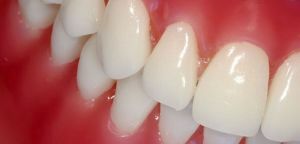 Gingivitis, according to statistics, is one of the most common diseases of the oral cavity, which can often be found in preschool and school-age children.
Gingivitis, according to statistics, is one of the most common diseases of the oral cavity, which can often be found in preschool and school-age children.
Gingivitis is an inflammation of the gums, where the epicenter of inflammation is the edge of the gum. The disease is characterized by excessive bleeding, as well as swelling and swelling. If the child does not receive timely help, the disease can develop into periodontitis, and this will lead to early tooth loss.
Contents
- About the causes of the violation
- Reasons for the local level
- Common causes
- Risk factors
- Symptoms of the main varieties of gingivitis
- Difference in the treatment of various forms of the disease
- Than to help the child at home
- Than it is fraught?
- Warn not to hurt
- And finally
The causes of the violation of
Allocate local and general factors that trigger the development of the disease in childhood.
Reasons for local level
These include unhygienic oral maintenance, which is most common in adolescent children, as well as the tooth decay process launched by
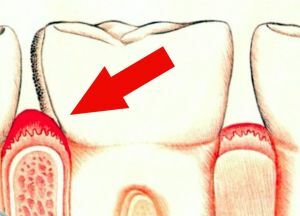 .
. Dental stone, improperly fitted crowns, dental fillings hanging on the gum, improper cleaning of the teeth from food debris, and cleaning of the mouth with objects that injure the gums, in most cases cause the development of gingivitis.
The development of gum infection is triggered by the following irritants:
- Wool dust .When small hair particles enter the oral cavity, irritation starts, which can provoke inflammation. The place where the most "industrial dust" is dirty rooms, as well as factories dealing with the movement of bulk materials, on which combustion occurs, the melting of solid objects.
- Ammonia .
- Toxic chemicals , for direct and internal use, such as mercury, bismuth, and carbon disulphide.
Common causes of
In this case, gingivitis is a symptom that arises from the internal morbid state of the child's body. The most common diseases that can trigger a violation are:
- Severe infections .It occurs as a result of the interaction of the internal environment of the organism with the external, while weakening the immune system of the organism. Internal factors include: infections such as influenza, chronic tonsillitis, digestive diseases
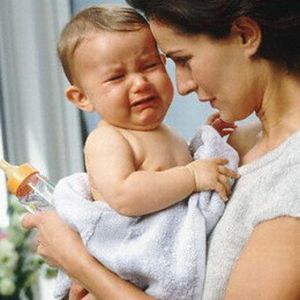 system( dysbacteriosis, gastritis), blood disease, diabetes and the like. External factors include: infection with viruses, helminths and bacteria in contact with the environment. According to medical research, 80-90% of cases are caused by the activity of microorganisms of plaque. Symptoms of severe infections include: loss of strength, high body temperature, poor overall health.
system( dysbacteriosis, gastritis), blood disease, diabetes and the like. External factors include: infection with viruses, helminths and bacteria in contact with the environment. According to medical research, 80-90% of cases are caused by the activity of microorganisms of plaque. Symptoms of severe infections include: loss of strength, high body temperature, poor overall health. - Hormonal disorders in children .The development of gingivitis often occurs in children during puberty, where the so-called period of hormonal storms occurs. As a result of the lack of balance between male and female hormones, the boys have an increase in the size of the breast gland, as well as a possible testicular tumor. There are teenage pimples. Girls have no menstruation between the ages of 14 and 16.At the same time, arms and legs become thin against a background of constant growth in growth.
Risk Factors
Risk factors also include:
- smoking;
- nasal breathing disorder;
- fasting;
- incorrect bite;
- application of microtrauma when cleaning teeth;
- depressive states that reduce immunity.
Symptoms of the main varieties of gingivitis
At the initial stage of gingivitis development there is a slight reddening of the gums, with the child beginning to lose appetite, becoming slightly irritable, bloating and upset of the stool.
Types of gingivitis common among children and their main symptoms:
- Atrophic .It is characterized by a weakly inflammatory condition of the gums with a roll-like thickening of its edges, and
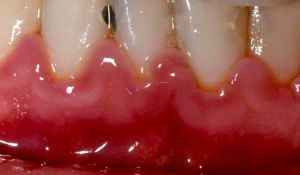 is also a phenomenon of atrophy. In children, a purulent discharge from the gums with the deposition of tartar begins to occur. The edge of the gum is a longitudinal splitting along the axis of the tooth and causes the child pain, hampering chewing, and also cleaning the oral cavity.
is also a phenomenon of atrophy. In children, a purulent discharge from the gums with the deposition of tartar begins to occur. The edge of the gum is a longitudinal splitting along the axis of the tooth and causes the child pain, hampering chewing, and also cleaning the oral cavity.
In most cases, the child does not experience pain, except for warm or cold stimuli. - Catarrian .According to medical research, this species occurs in children most often, because at the time of teething occurs an acute form of catarrhal gingivitis. Typical features are redness of the gums, in the chronic case the "marginal gingiva" acquires a bluish tint with a slight purulent discharge. Rapid proliferation can block the crowns of teeth, forming deep gingival coves. The signs of the disease are: uncomfortable sensation in the gums, bad smell from the mouth, the food gets a perverted taste.
- Ulcerative .This type develops in children, due to acute catarrhal gingivitis. The presence of ulcerative gingivitis is observed as a consequence of common diseases of the body in children. This disease can lead to anomaly of the upper and lower jaws.
The main signs of ulcerative gingivitis are pain, itchy gums and edema, while a dense dark blue hue of the gums appears, which begins to bleed with little physical impact. - Hypertrophic .This type of disorder occurs in children at the time of puberty, with a transition period, as well as in connection with the violation of the hormonal background. In this case, the upper and lower jaws are affected. This process involves one or two gums, while the papillae coming from the gums cover part of the tooth.
Difference in the treatment of various forms of the disease
Treatment of different forms of the disease has its own specifics and differences.
Treatment of catarrhal gingivitis:
- use 3% hydrogen peroxide and rinse mouth cavity during tooth cleaning;
- use chlorhexidine-based drugs, namely Corsodil, Peridex;
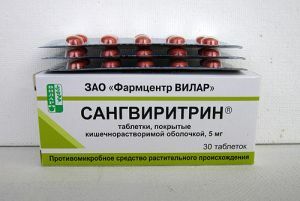
- hydromassage of gums;
- iodine glycol paste;
- Sanguirythrin, rinse aid in solution 0.2%;
- solutions based on tin fluoride.
Treatment of hypertrophic gingivitis:
- injection of 40% glucose solution, 3 and 5 procedures every two days;
- laser removal of overgrown areas of the gum.
Therapy for aftropic form of disorder:
- Levomekol ointment, which is a good antiseptic;
- rosehip oil, peach, sea buckthorn oil;
- electrophoresis of vitamins B1, B2, PP;
- laser therapy.
How to help your child at home
Treatment of gingivitis in children at home includes several steps:
- To remove dental deposits, use polished brush .
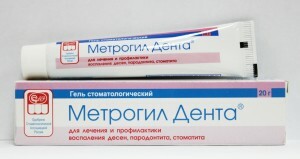
- Use anti-inflammatory gels and ointments .You can use such gels as Metrogil Denta, Holisal, Asepta.
- Use of antiseptic for mouthwash, the most effective use of antimicrobial agents.
Antiseptic agents include:
- Chlorhexidine 0.05%.The cost of this facility is about 20 rubles per package, sold in a pharmacy without a prescription. Rinse 2-3 times a day for 2 minutes.
- Miramistin .The cost of 200 rubles for one bottle.
In addition to medicines, folk remedies are also used:
- Herbs. Chamomile, eucalyptus, calendula - 10 grams of the selected herb should be poured a glass of boiling water, then wait 15 minutes and rinse the resulting broth with the oral cavity.
- Honey .Soak a piece of honey with honey and lubricate the inflammation site about 4 times. After this procedure, you can not eat anything for
 hours.
hours. - Aloe juice .Due to its composition, aloe juice helps to destroy most harmful microbes.
- St. John's wort oil .Take two tablespoons of St. John's wort, then pour a glass of olive oil. The mixture is thoroughly mixed and boiled several times. The resulting oil is gently rubbed into the gum several times a day.
Than it is fraught?
If timely not treated with gingivitis, it can develop into periodontitis, which will lead to tooth loss.
The danger is that when gingivitis develops into a more complex form, intoxication and inflammation of the oral cavity can occur.
If the child does not give the child timely treatment, teeth can start to grow incorrectly. With improper elimination of the inflammation process, a so-called relapse of the disease occurs. With bacterial infection, gums may appear on the gingiva.
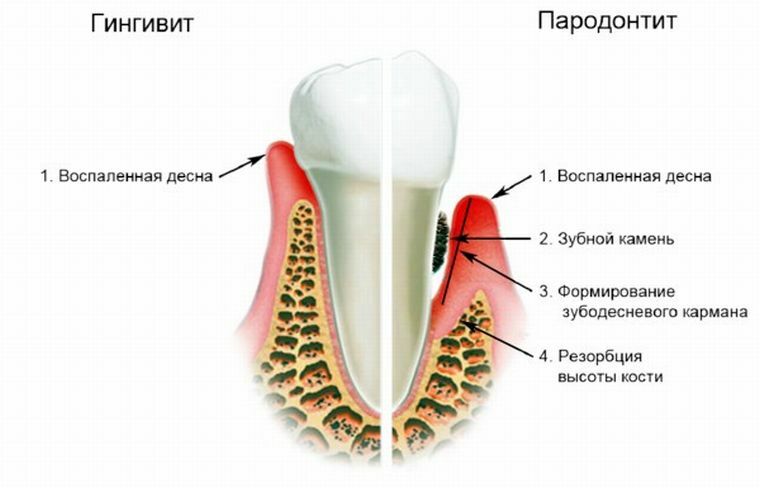
Caution not to hurt
 First of all, it is necessary to teach the child proper oral hygiene, and also to exclude walks in the places of the greatest accumulation of dust.
First of all, it is necessary to teach the child proper oral hygiene, and also to exclude walks in the places of the greatest accumulation of dust.
Once a month, you need to go to the dentist for a checkup, and also have to brush your teeth 2 times a day, rinsing the mouth with an antiseptic.
Cleaning of the mouth should begin with the front teeth, massaging movements up and down, pay attention to cleaning the front and back walls of the teeth.
And finally
Gingivitis is a disease that brings a lot of psychological and physical discomfort to the child, which in turn can be detrimental to its development and good marks.
Before the child opens the whole world, which he will know, and it will be very a pity if the disease causes early tooth loss.
